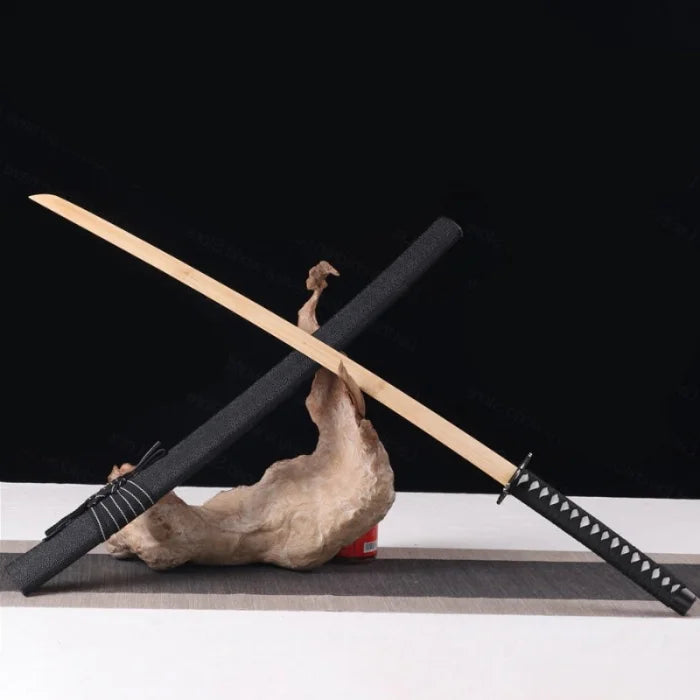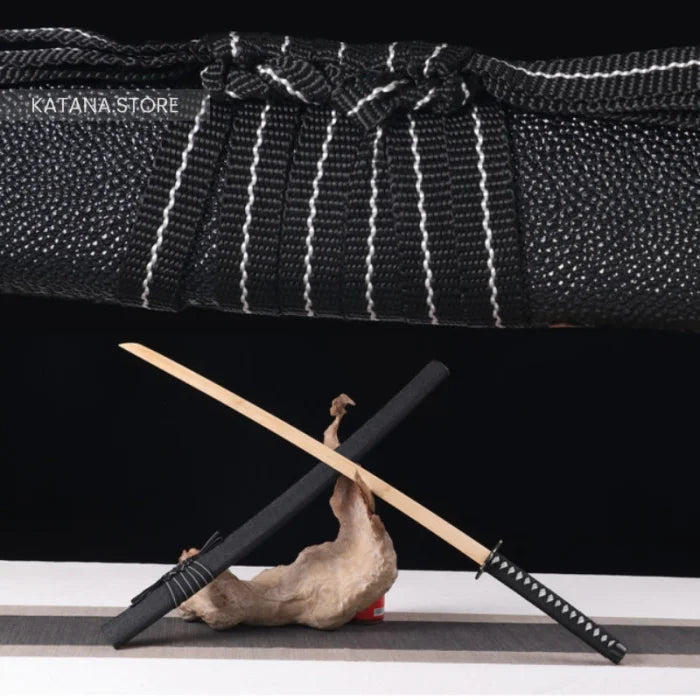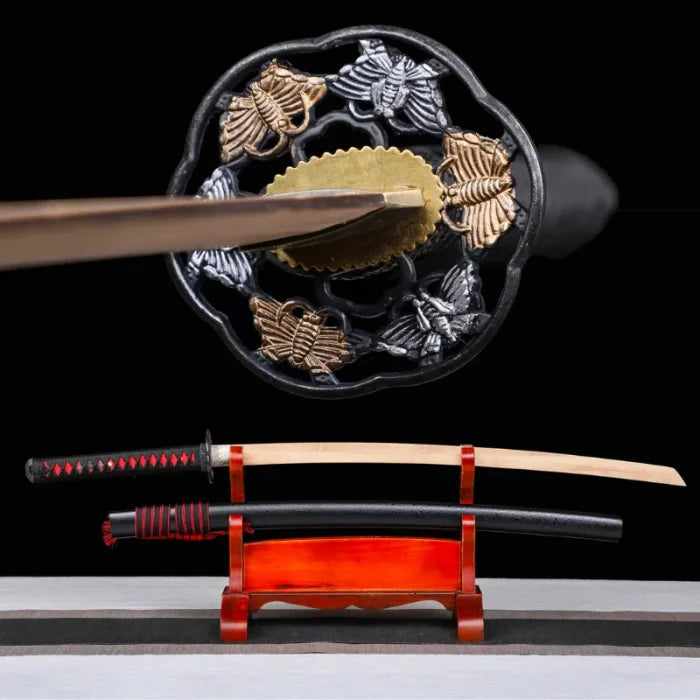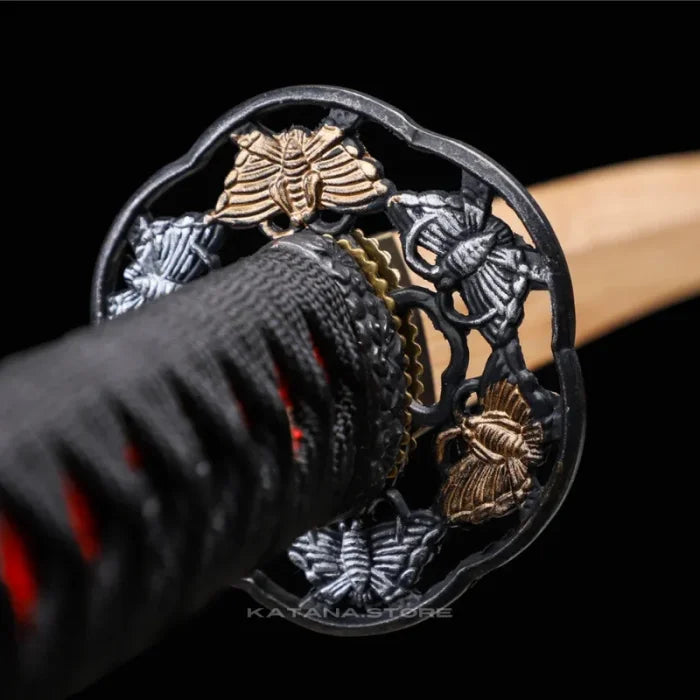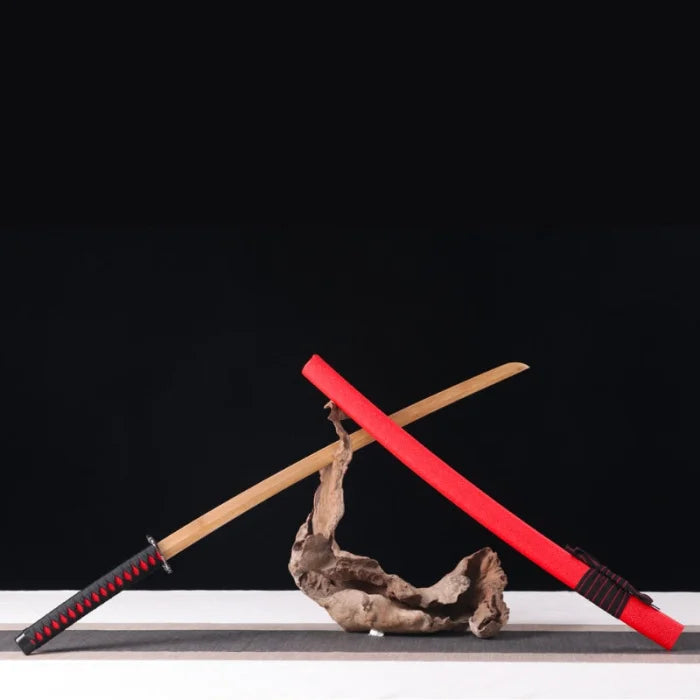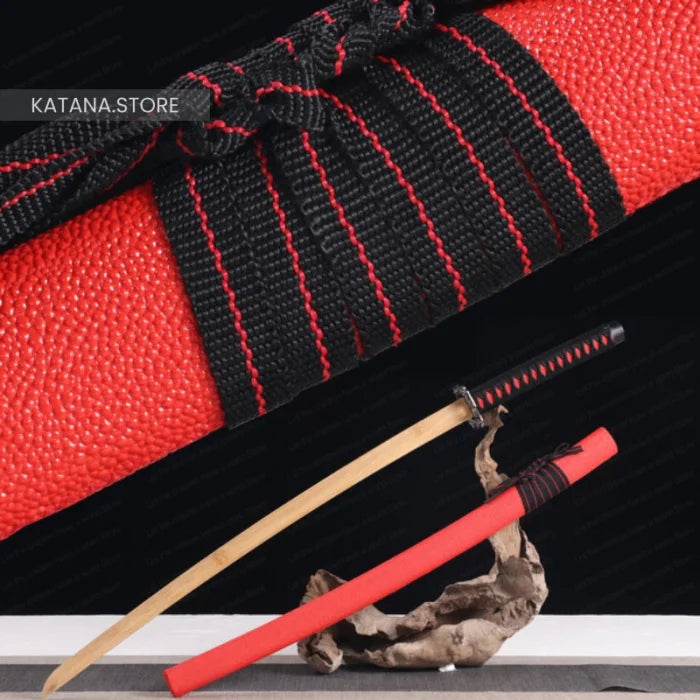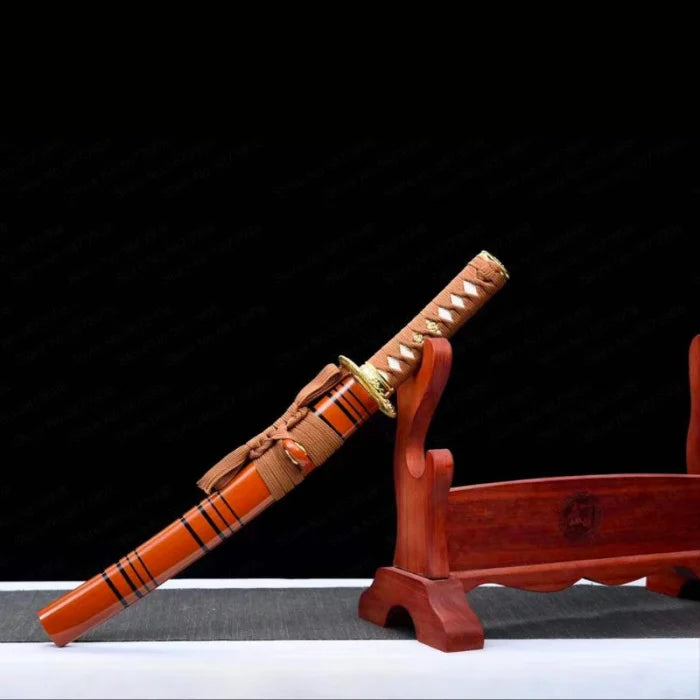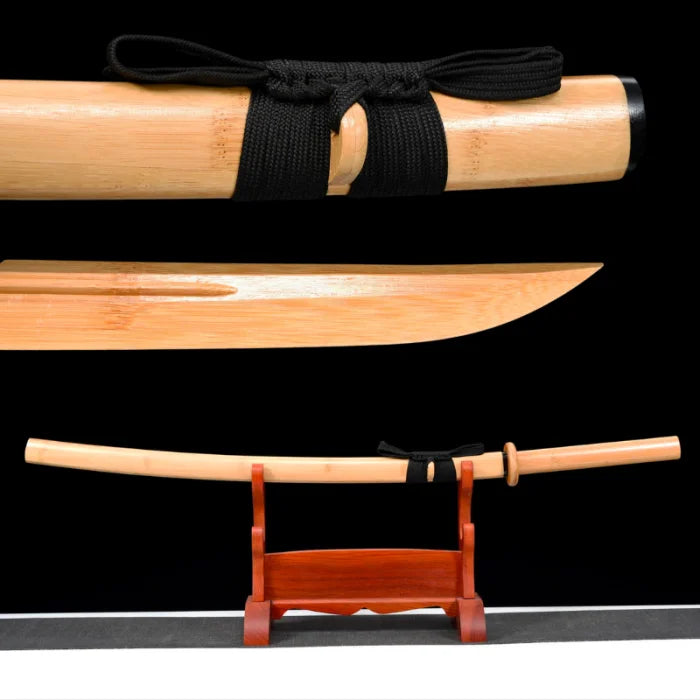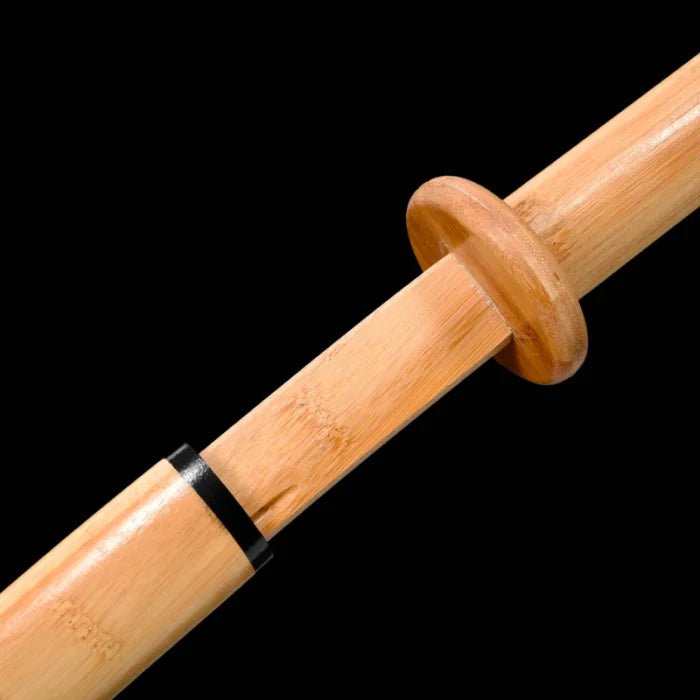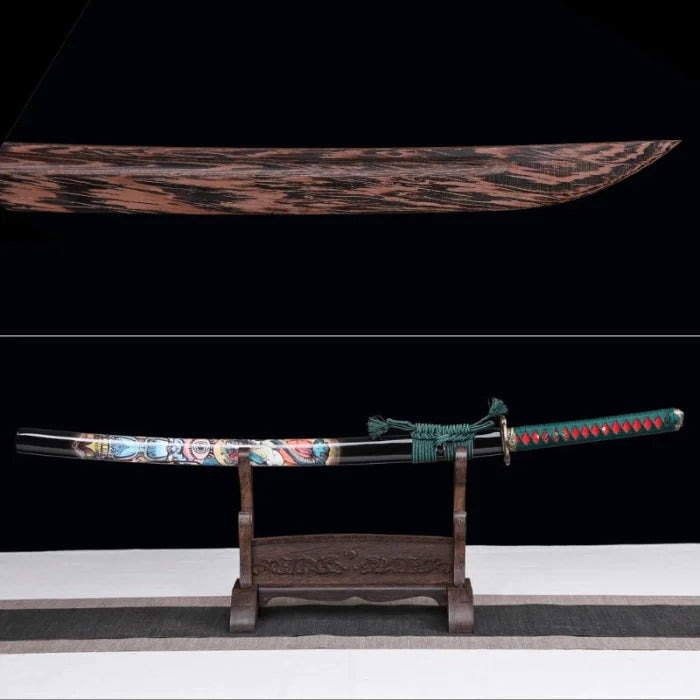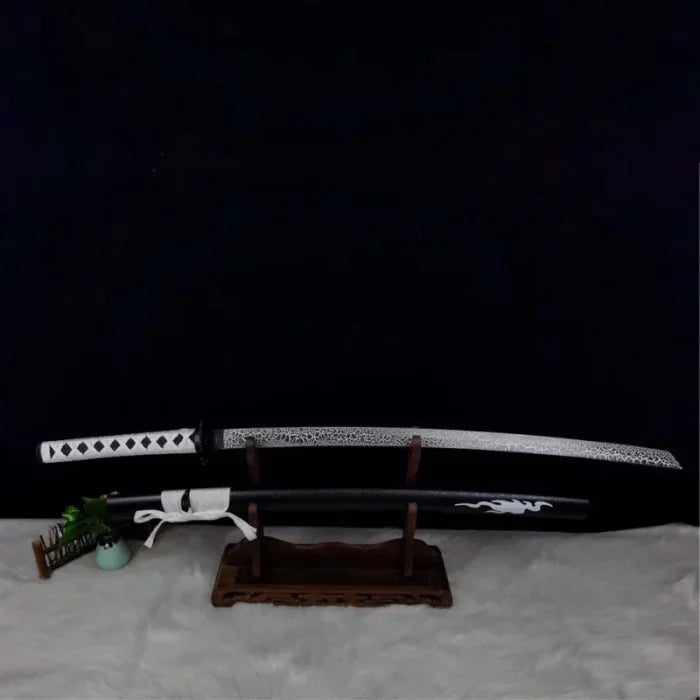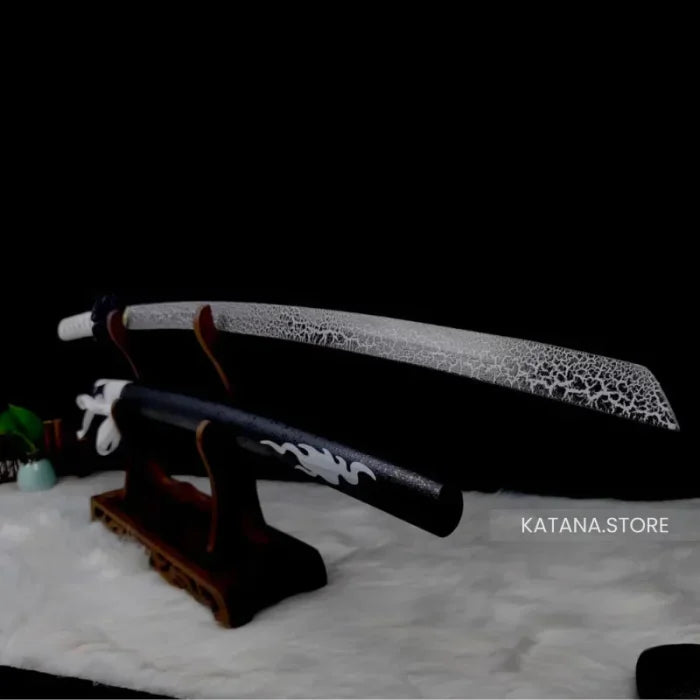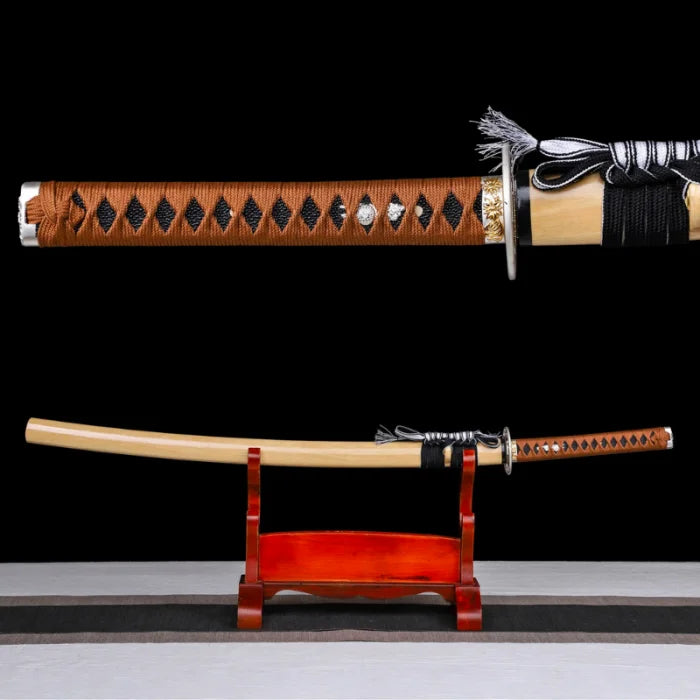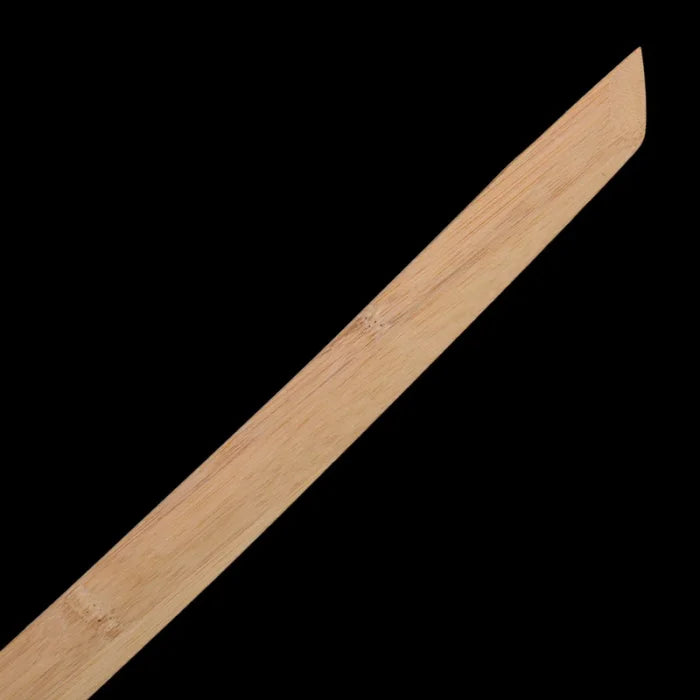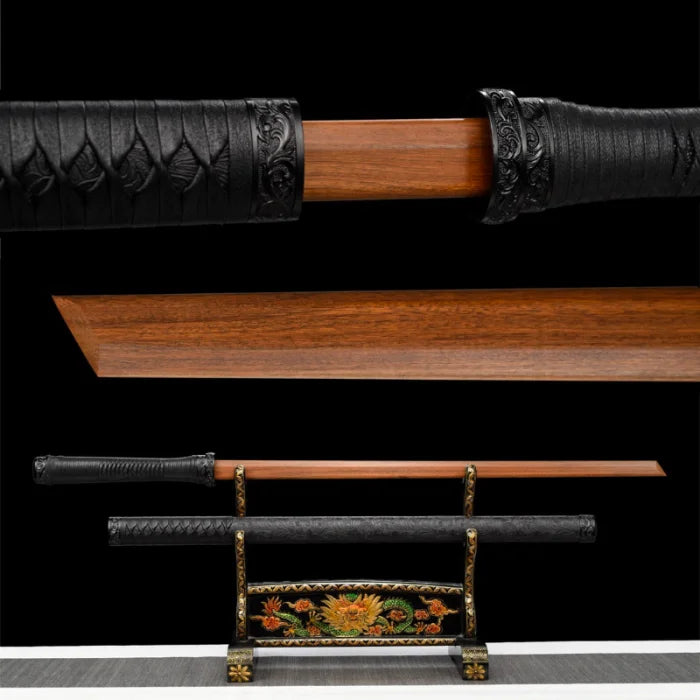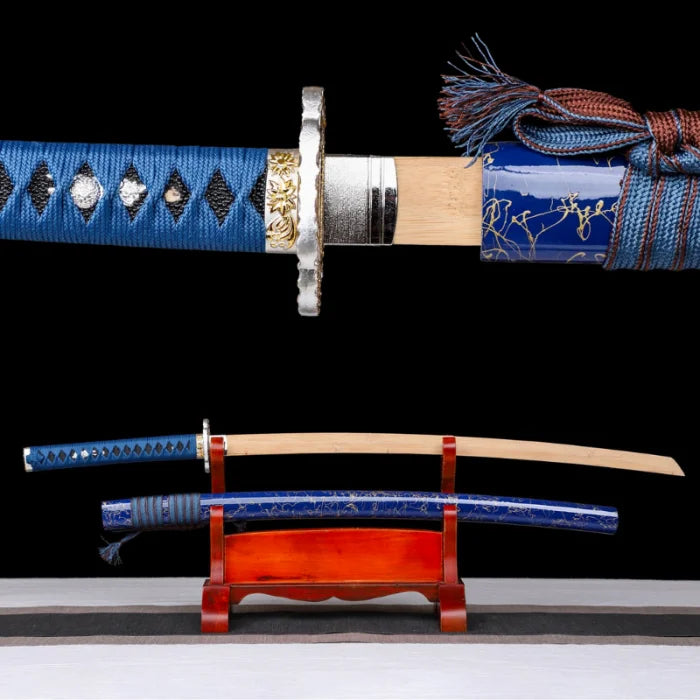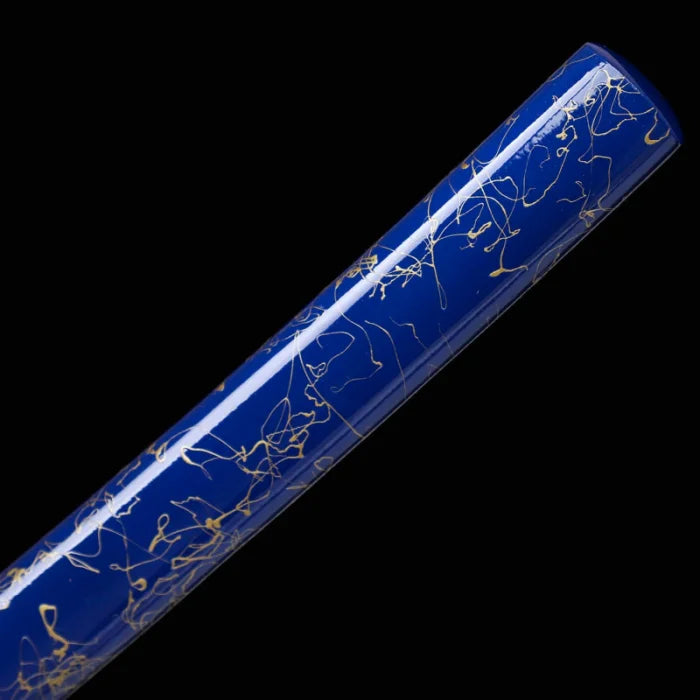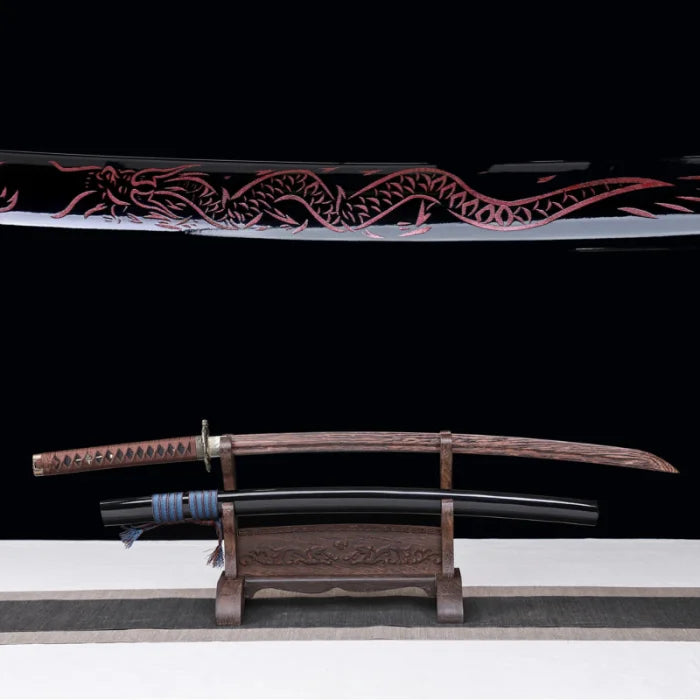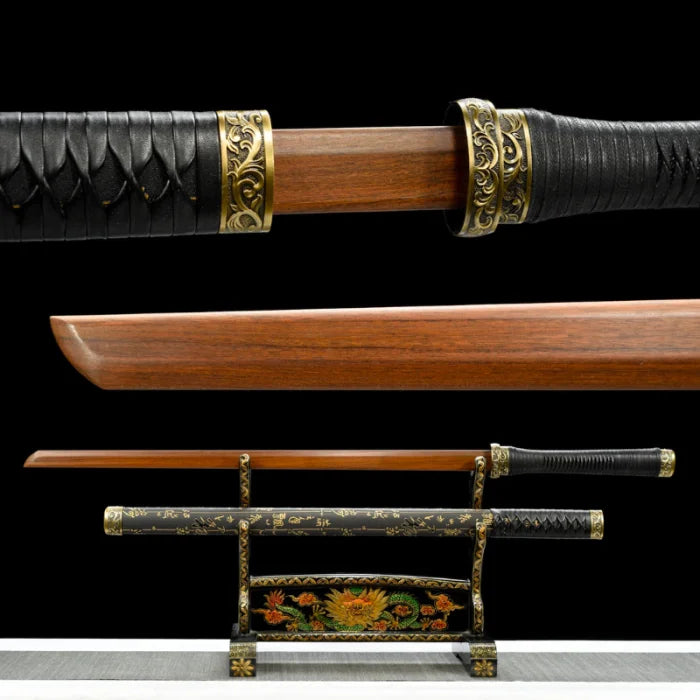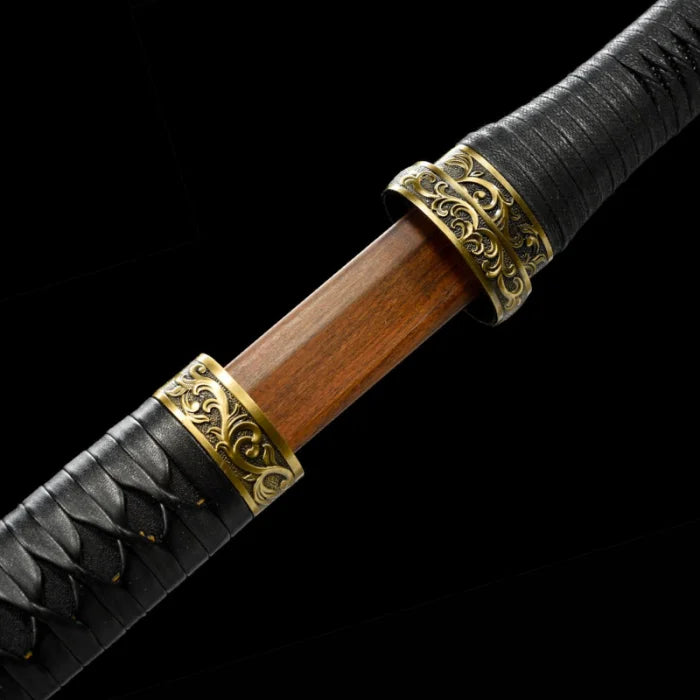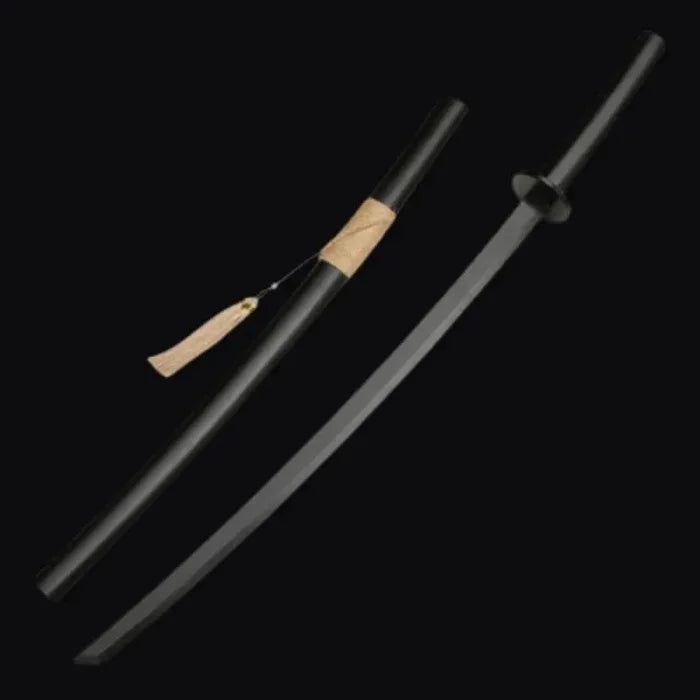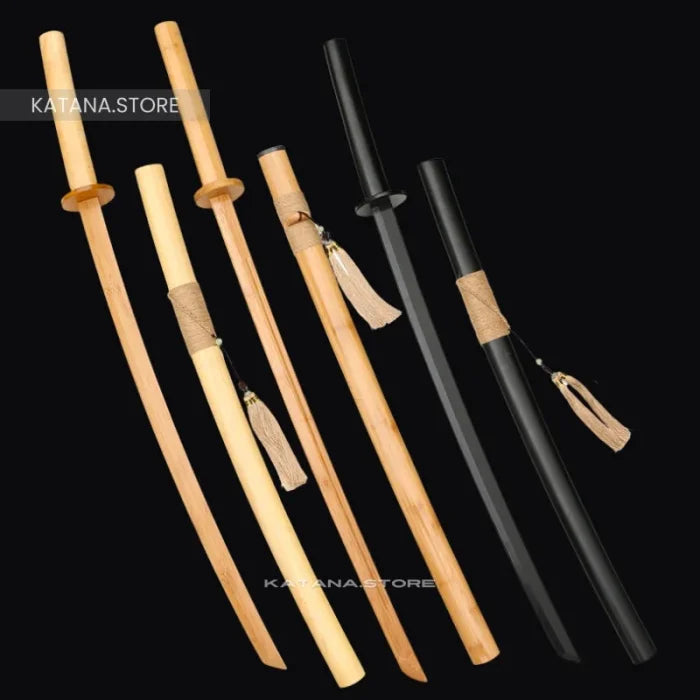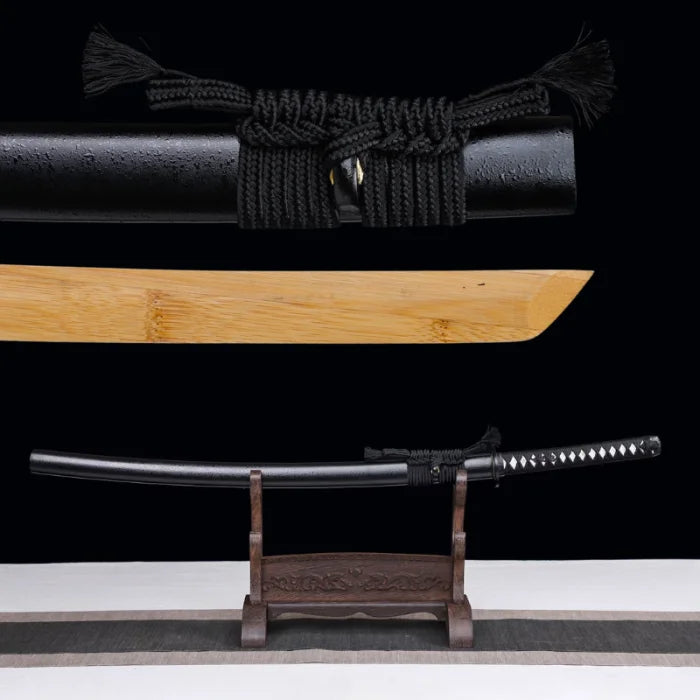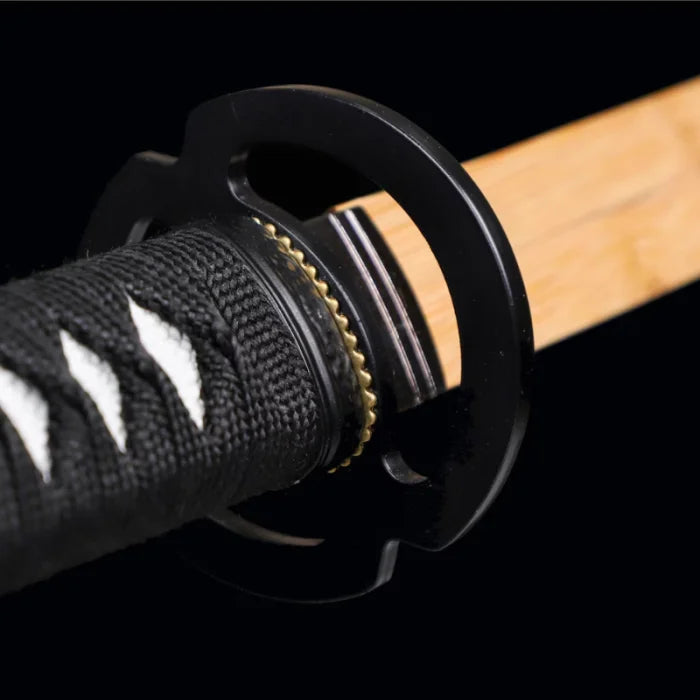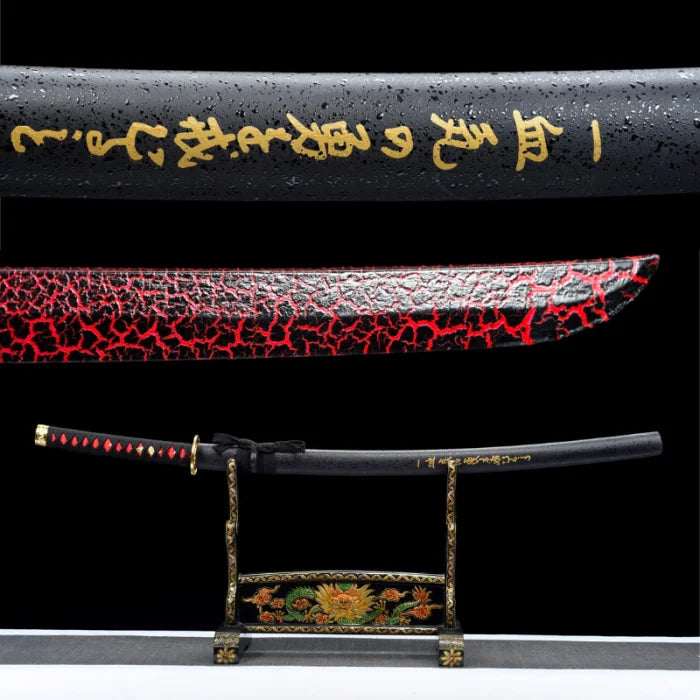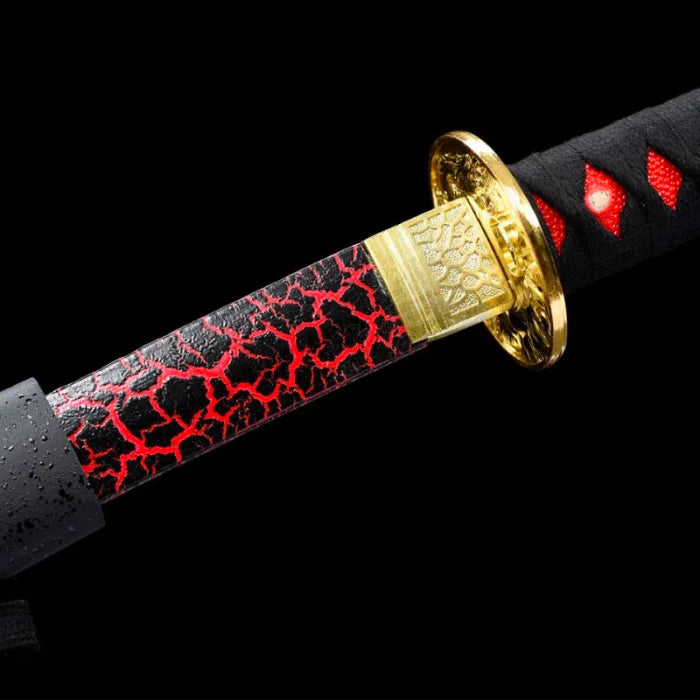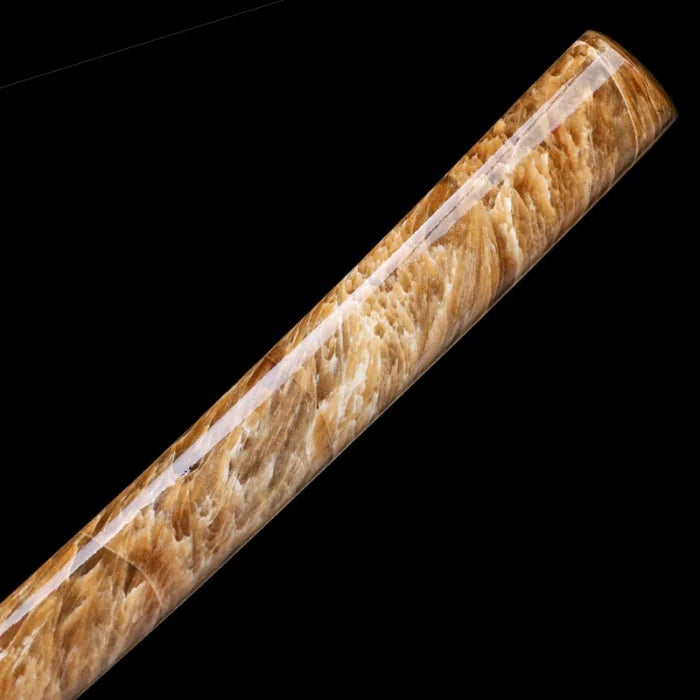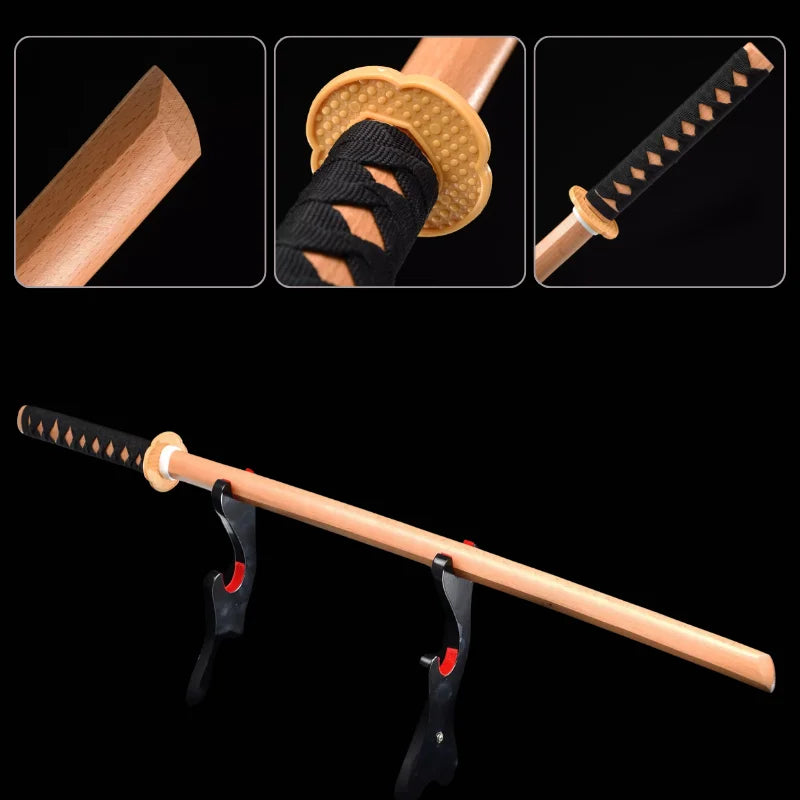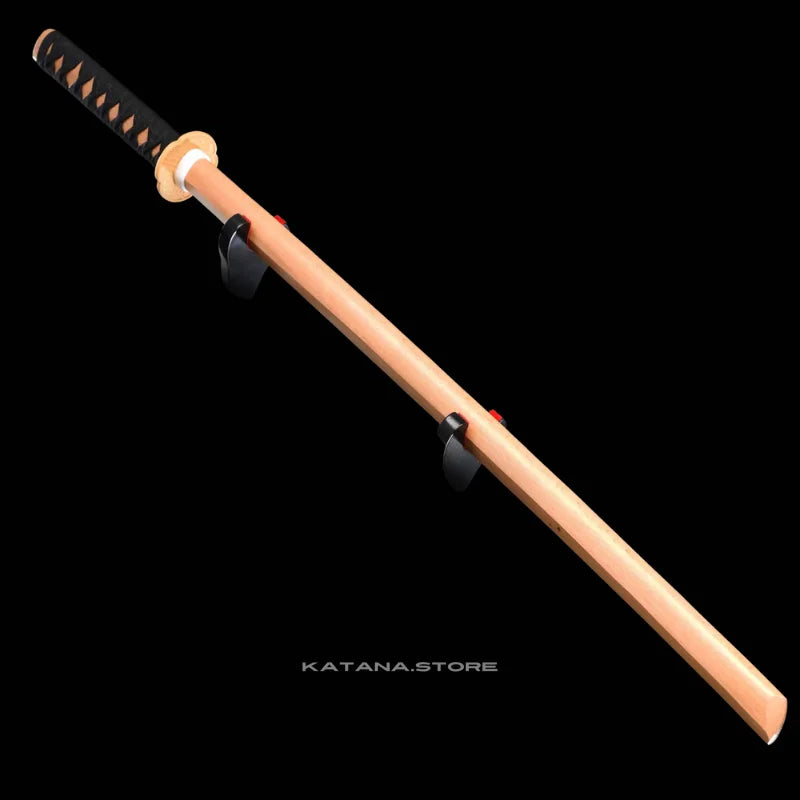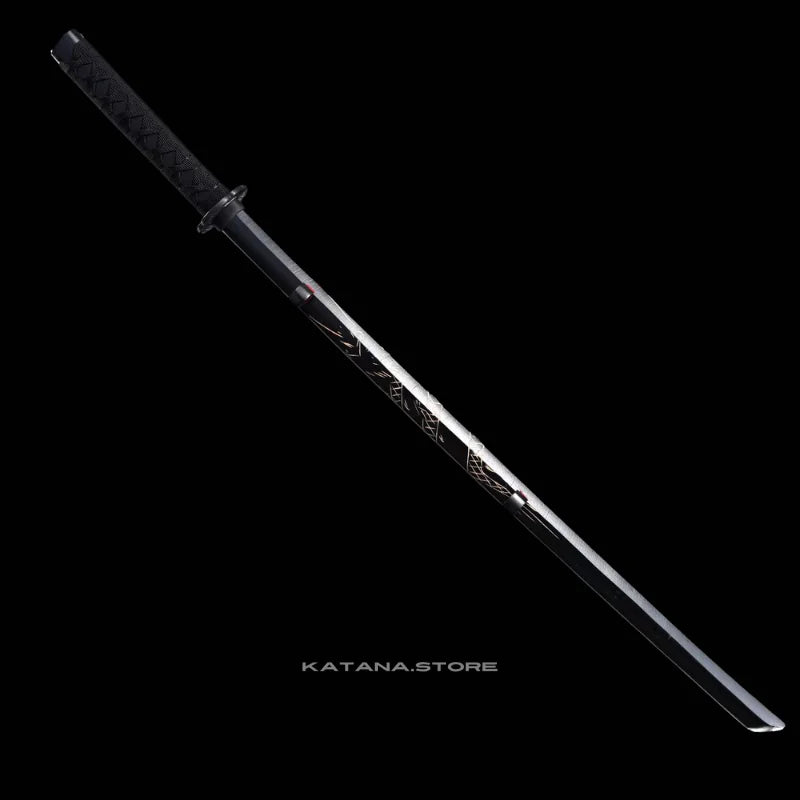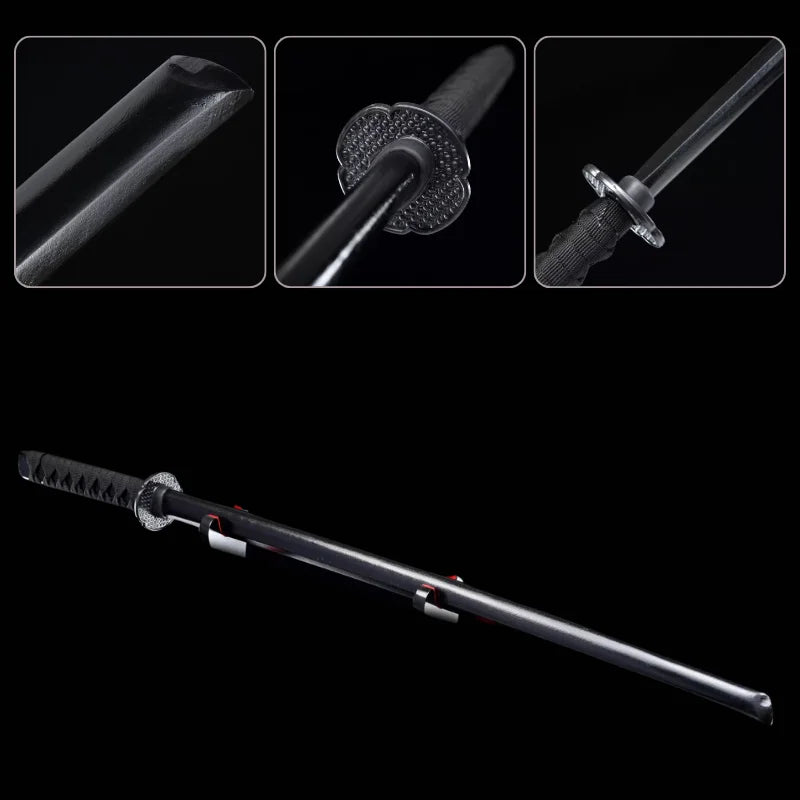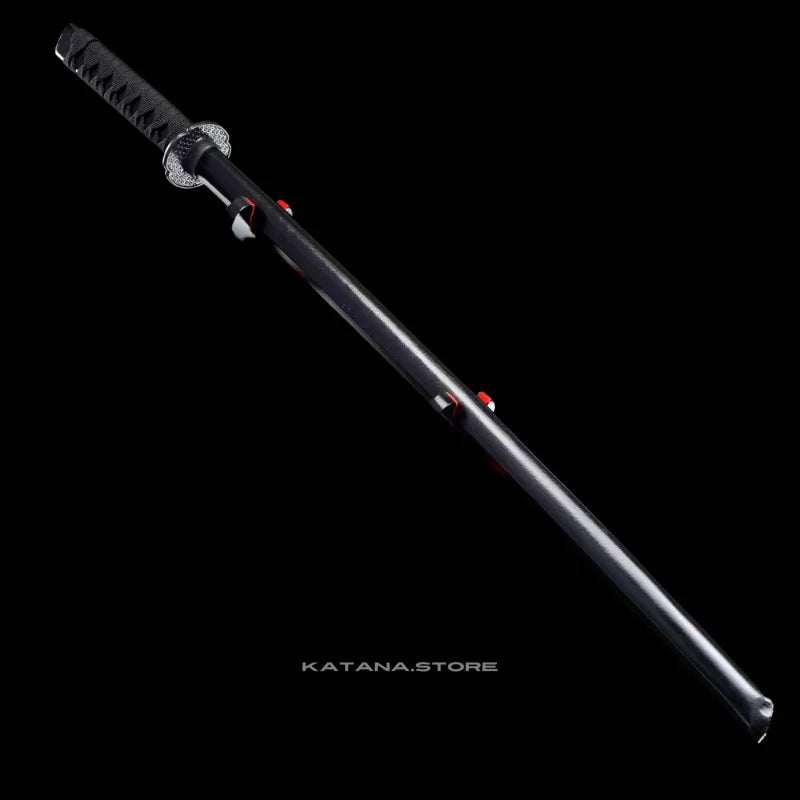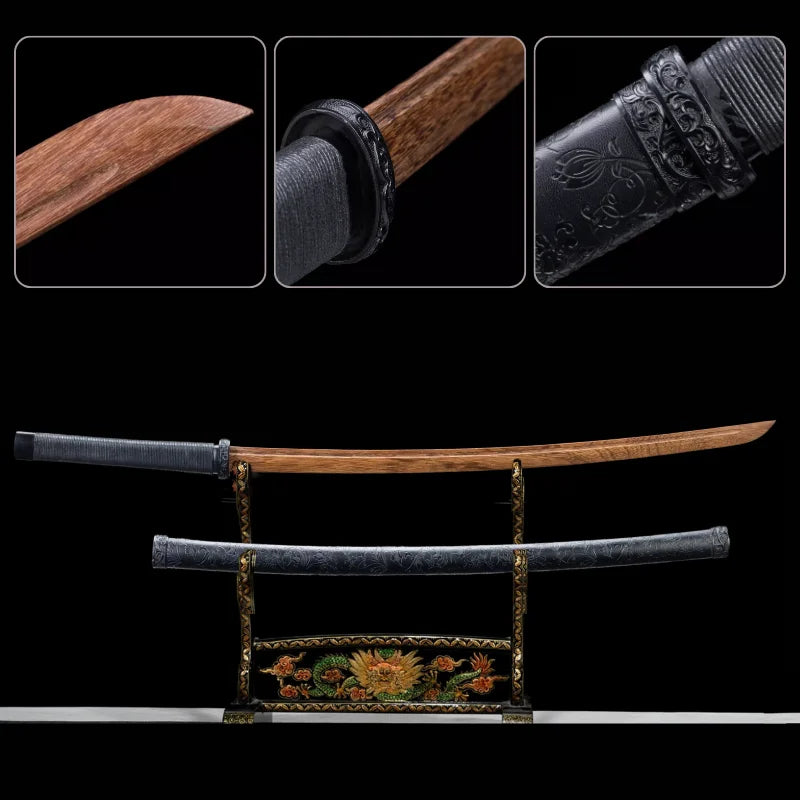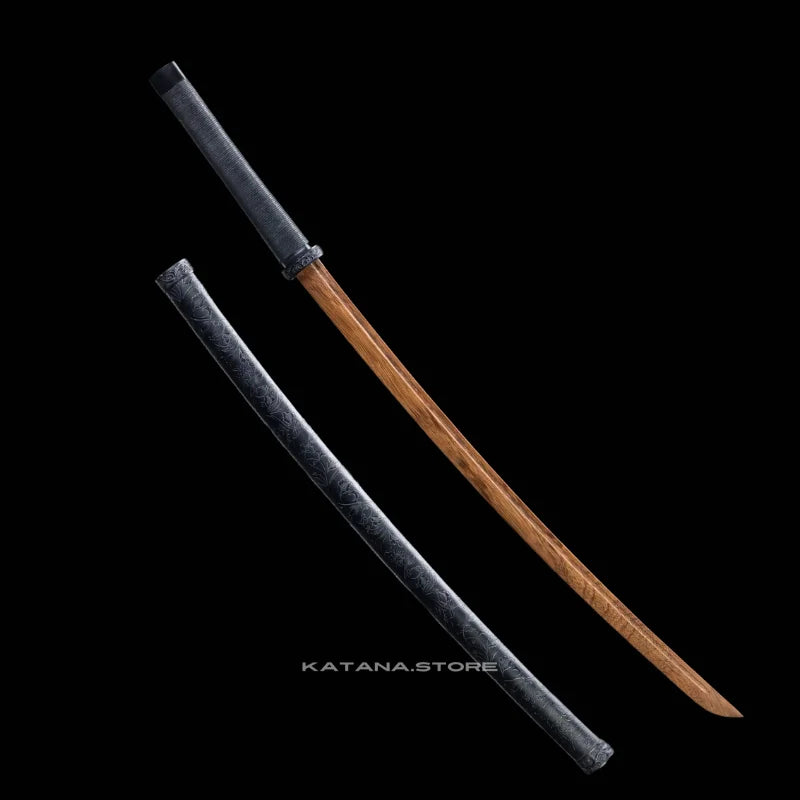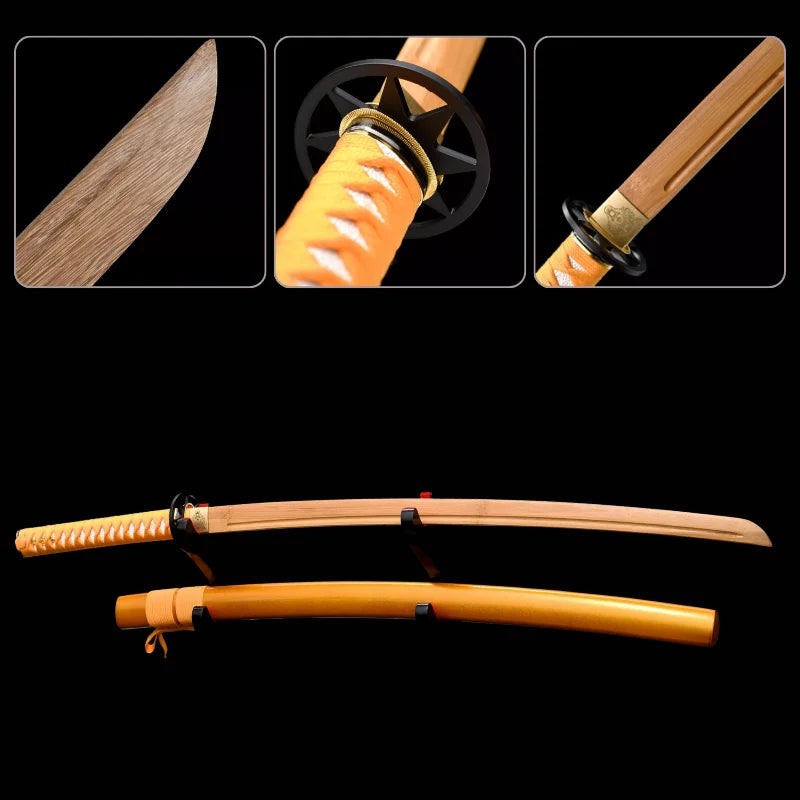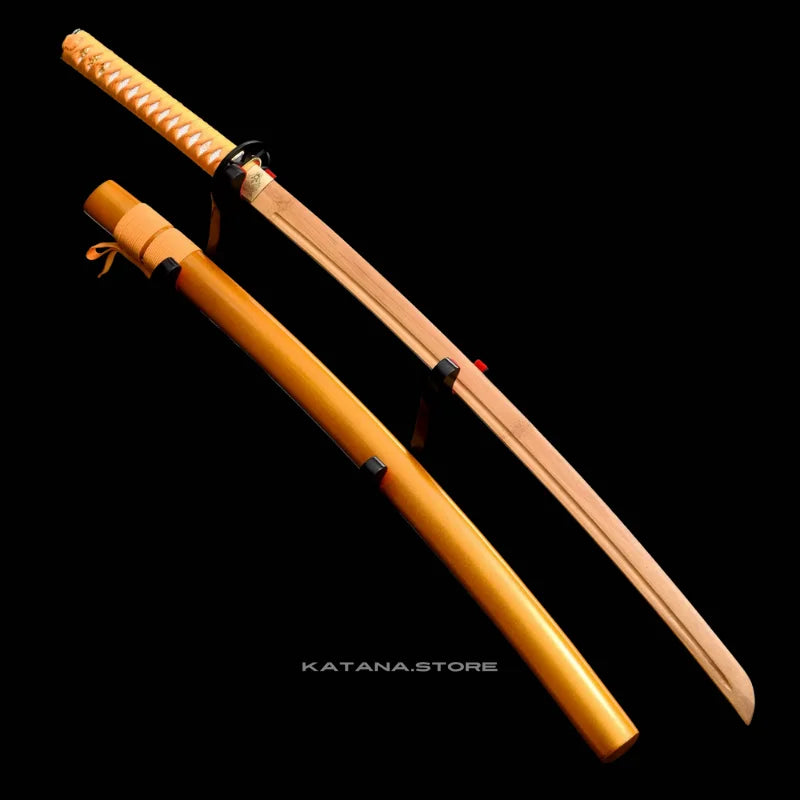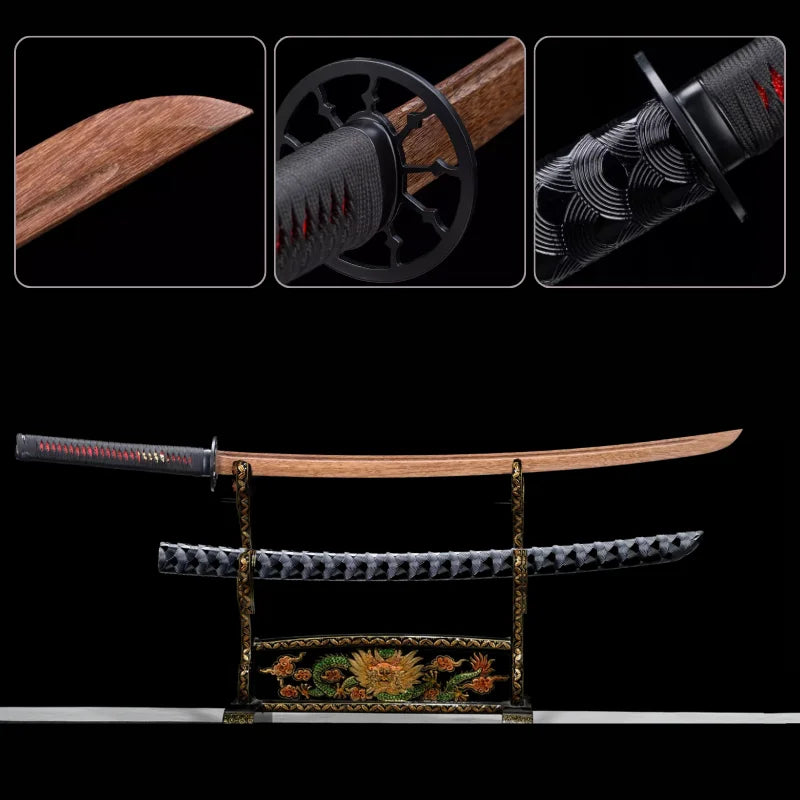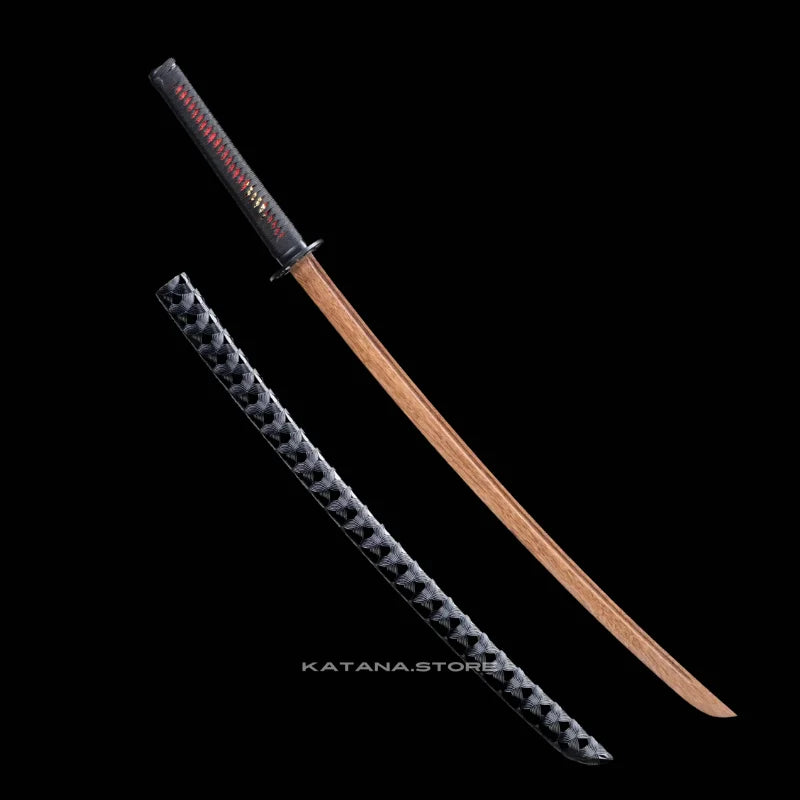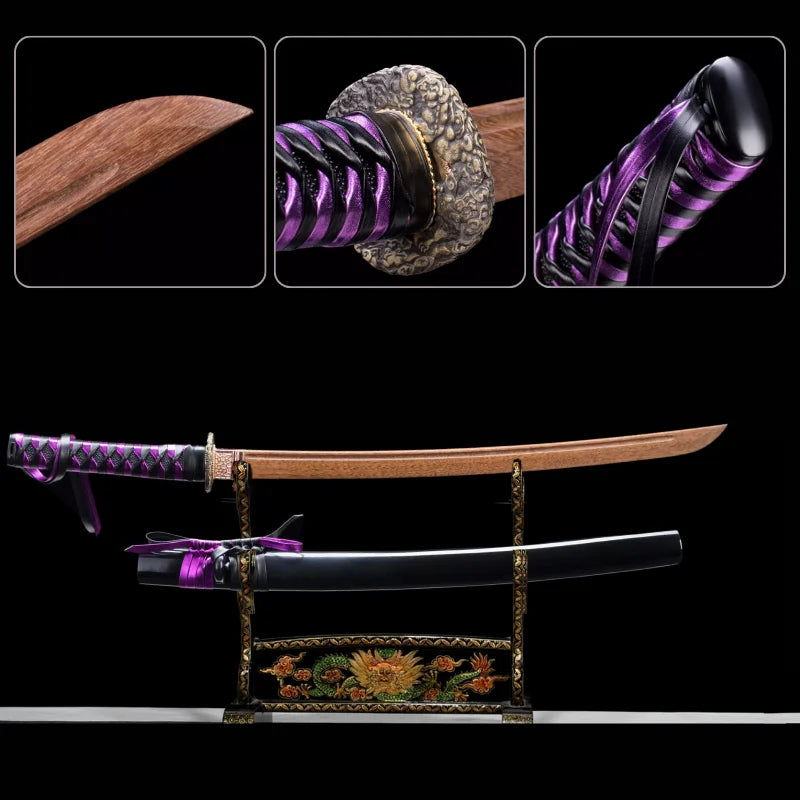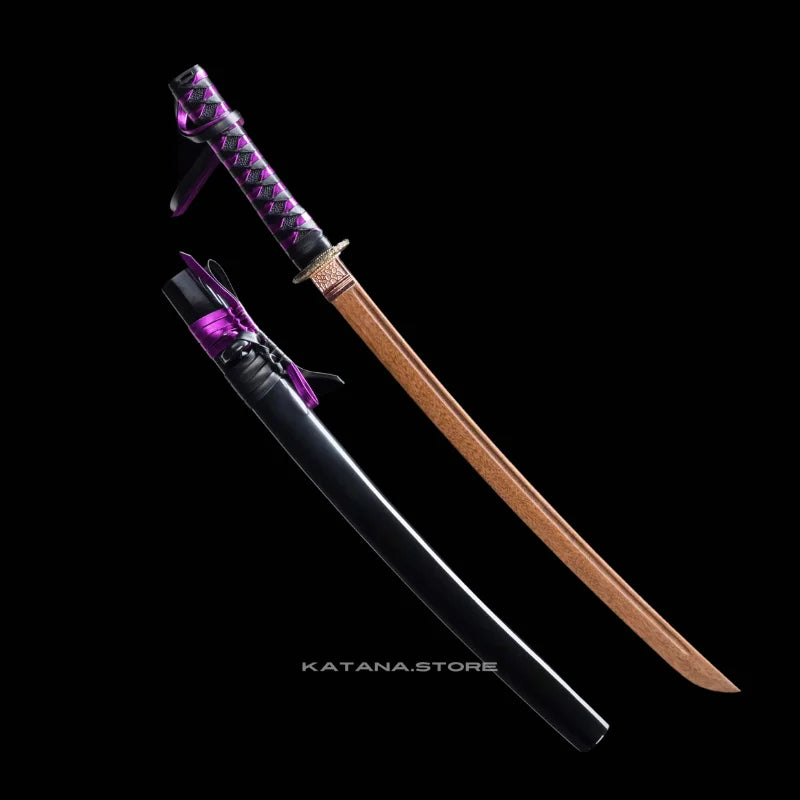Wooden katana
Bokken (Katana wood)
Wooden katanas, traditionally referred to as bokken (木剣) or bokutō (木刀) in Japanese, originated during Japan's feudal period, an age characterized by the esteemed samurai warrior class. Integral to the historical progression of Japanese martial arts, these practice swords are particularly significant in the study and practice of disciplines such as Kenjutsu and Kendo. These swords were used by samurai to practice their skills, refine techniques, and safely duel with their peers. The use of wooden katanas allowed for a realistic simulation of combat while minimizing the risk of serious injury.
Discover our beautiful selection of wooden katanas, the ideal option for anybody seeking to master the traditional Japanese swordsmanship without taking any hazards with a live blade. A wooden katana is a particular kind of wooden sword. The samurai warriors of old Japan utilized it as a traditional Japanese weapon. Wooden katanas are mainly used for practicing or as decorative katana.
Despite not being as sharp as metal swords, wooden katanas may still be incredibly lethal weapons. Handling wooden katanas properly and respectfully is important. These pieces of art are exquisite and detailed.
Our wooden katanas offer a safe and realistic training environment for martial arts aficionados, collectors, and practitioners alike. They are made to emulate the weight, balance, and feel of a traditional katana.
Can a wooden katana cut
A wooden katana, while meticulously crafted and often used for martial arts training and demonstrations, cannot cut in the same way as a traditional samurai sword or Japanese katana made of steel. Unlike a sharpened metal blade, a wooden katana is primarily designed for practice and safe sparring, lacking the sharp-edge necessary for cutting. They are not designed for slicing or strikes, but are safe replicas of samurai warrior sword.
Its function is limited to training and does not extend to the cutting capabilities of a sharpened, tempered, and hardened steel blade of a combat-ready samurai sword or Japanese katana.
How are wooden katana made
Crafting a wooden katana, or bokken, is an exercise in precision and historical fidelity. Unlike conventional Japanese swords or samurai katanas that are forged from high carbon steel or Damascus steel, wooden katanas are made from sturdy hardwoods such as oak or hickory. These woods are chosen for their durability and ability to mimic the weight and balance of real swords. The art of crafting a bokken has evolved from ancient sword making techniques, where attention to detail in forging and polishing was paramount.
Traditionally, the process involves carving the hardwood to replicate the curved blade of a katana, ensuring it has a full tang for optimal balance, much like its steel counterparts. Some bokkens are even constructed to replicate medieval swords or long swords, catering to practitioners of different martial arts like Aikido or Kendo. The hilt is often lacquered for durability and grip, while some may include a tsuba (hand guard) for a more authentic feel.
Caring for Your Wooden Katana
Maintaining a wooden katana requires a different approach compared to metal samurai swords or ninja weapons. Regular dusting and a light application of natural oil preserve the wood's quality and prevent it from drying out or cracking. Unlike steel swords or Damascus-steel katanas, which may require sharpening and polishing, wooden katanas, made of a piece of wood, primarily need protection from humidity and direct sunlight.
If the bokken has a lacquered finish, avoid using harsh chemicals for cleaning. Instead, use a soft cloth and mild cleaning agents. For those used in fencing or martial-art demonstrations, checking for splinters or cracks is essential to ensure safety during training.
Wooden katana replica
For enthusiasts and practitioners aspiring to master the art of the samurai sword, our hand made wooden katanas, known for their precision and quality, are indispensable. Used in various ancient martial arts like Kendo, Iaido, and Kenjutsu, these wooden swords provide a safe and effective means to refine techniques and forms. With roots deeply embedded in the traditions of Japanese samurai and martial arts, they replicate the dynamics of handling a real Japanese katana.
The wooden katana replica is a fantastic method to demonstrate your swordsmanship abilities because it is a replica of a classic Japanese sword. This copy, which is made of sturdy wood, is built to resist the demands of training and use.
This katana is a piece of art because to the lovely wood grain finish, and the unsharpened blade makes it suitable for training and practice. The wooden katana replica is a wonderful addition to any collection and is a thoughtful present for any aspiring samurai.
Safety remains paramount in martial arts practice, and our wooden katanas are crafted with this principle at their core. These training swords mirror the weight, balance, and feel of an authentic Samurai sword or long sword, ensuring a realistic and authentic training experience. They are designed to emulate the sharpness of a razor edge without the inherent risks, providing a practical tool for learning and honing sword skills.
They are constructed from durable materials like oak and premium polypropylene. Additionally, our wooden katanas are skillfully crafted to faithfully reproduce the weight, balance, and feel of a real blade, providing a true and authentic training experience.
How to Practice with a Wooden Katana
Wooden katanas serve as an essential tool in martial arts training, from beginners in Karate or Tai-chi to advanced practitioners in Kenjutsu. They are used for sword fighting drills, demonstrations, and duels, offering a safe yet effective way to practice. These bokkens are battle-ready in terms of durability, making them suitable for rigorous training sessions.
Advanced students use them to practice swordplay techniques such as striking, parrying, and body alignment. The blunt edges and blunt tip ensure safety, yet the design mimics a razor sharp katana, providing a realistic experience. Training with a wooden katana helps in understanding the mechanics of Samurai warriors or mastering the art of Bushido.
- Mastering Basic Techniques and Forms
To build a solid foundation in swordsmanship, beginners should begin by studying fundamental skills including grip, posture, and movement. You may concentrate on these essential abilities while training with a wooden katana without the strain and risk of using a sharp blade.
- Engaging in Partner Drills and Sparring
As you progress in your training, you can use a wooden katana to engage in partner drills and controlled sparring sessions. These exercises help to develop your timing, reflexes, and ability to read your opponent's movements while maintaining a safe training environment.
- Safely Practicing Advanced Techniques
With wooden katanas, more seasoned practitioners may safely execute more difficult moves like cutting, thrusting, and parrying. This enables you to improve your abilities and methods without running the danger of hurting yourself or others.
How to choose a wooden katana
It's critical to choose a wooden katana that will meet your demands when making a purchase. A heavier sword is what you should choose if you want to utilize it in battle.
You might want to choose a lighter sword if you're searching for one to show in your house. A longer blade will be harder to manage, thus the size of the blade is also crucial.
Your search for the ideal training equipment will be facilitated by the outstanding selection of styles and materials available in our range of wooden katanas. Our wooden katanas are made to suit all skill levels and preferences, ranging from basic, lightweight bokken for beginners to more complex, elaborate models with superb craftsmanship.
A Unique and Elegant Wooden Display sword
In addition to their practical uses, wooden katanas can also serve as elegant and unique display pieces. Our collection features a range of beautifully crafted designs, some with intricate detailing and carvings that pay homage to traditional Japanese art and culture. These wooden katanas make for a stunning addition to any home, dojo, or martial arts studio,
Where to buy wooden katana
When purchasing a wooden katana, there are a few factors to take into account.
The type of wood is the first factor. There are benefits and drawbacks to each type of wood that may be used to construct a sword which will define its resistance, hardness, flexibility but also its price. The most common type of wood used to make katanas is oak, however maple wood and cherry wood can also be utilized.
The weight of the sword should be taken into account second. Although a heavier sword will be more durable, it will be more challenging to use.
The next consideration should be the blade's size. Although a longer blade will be more powerful, it will also be more challenging to manage.
It's crucial to get a wooden katana that is constructed from premium materials. You may choose the wooden katana that suits your demands from our large selection of wooden katanas. We employ premium components and building techniques.
How much is a wooden katana
The cost of a wooden katana is determined by the quality of the wood and the level of expertise to build this wooden Japanese sword. Whereas a low-end wooden katana might fair fetched some hundred dollars, a high-end one might cost thousands of dollars. The sort of wood utilized and the age of the tree from which the wood was gathered can both have an impact on the pricing.
Choosing the Right Wooden Katana
Selecting the right bokken involves considering its intended use, whether for fencing, martial arts training, or as a cosplay prop. The weight and length should match the practitioner's physicality and the style of martial art being practiced. For instance, a longsword style bokken would be different from one mimicking a Ninja sword or a short sword.
The type of wood is also crucial. Woods like oak and hickory provide durability and the right weight for a more authentic training experience. The grain of the wood should be consistent, ensuring the katana's strength throughout its length. Additionally, the craftsmanship should reflect Japanese-style artistry, making it not just a training tool but also an ornamental piece reflecting Japanese culture and history.
Filters
28 products



